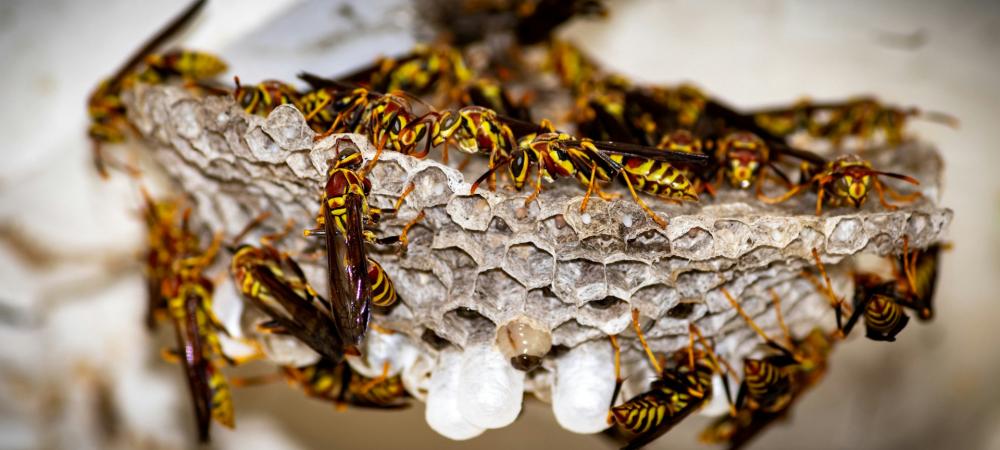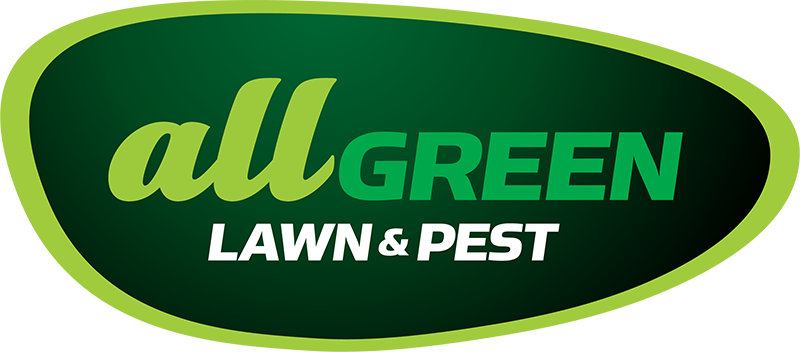Why Wasps Build Nests in Your Yard

Running into wasps outside your home isn’t just a minor summer annoyance. For many folks in Oklahoma, seeing these stinging insects zip through the yard is a common part of July. But when you find a nest tucked under the eaves, hidden in the shrubs, or dangling from the patio furniture, suddenly the situation feels a lot more personal. And if you’ve ever asked yourself, “Why my yard?” you’re not alone.
Wasps don’t just show up by chance. Whether you live in Norman, Bethany, or anywhere between, certain conditions make your yard seem like prime real estate to them. Understanding what draws wasps in the first place is a simple step that can go a long way toward keeping them away and keeping your outdoor space safer and more comfortable all summer long.
Why Wasps Choose Your Yard
Wasps are always on the lookout for a good place to live, feed, and build. Your yard might be serving up everything they need without you realizing it. Unlike bees that focus on flowers, wasps are scavengers. They want access to food, shelter, and security. If they find that in your yard, they’re going to stick around.
There are a few key reasons wasps might be picking your outdoor space:
- Safe nesting spots: Open eaves, tree branches, fence corners, and even gaps in sheds or decking are great places for a wasp to start building. Spots that are undisturbed for long stretches are especially appealing.
- Available food sources: Wasps love sugary things and meat. Any open trash bins, grills with leftover food residue, pet food bowls, or even hummingbird feeders can attract them. Fallen fruit under trees can also provide an easy meal.
- Still or standing water: Watering cans, bird baths, puddles on tarp, or saucers under plant pots can draw wasps looking for hydration.
- Flowering plants: While they don’t rely on nectar like bees, many types of wasps won’t say no to the extra food. A colorful, blooming yard might be a feeding bonus for certain swarming types.
Once a wasp sees your yard as a favorable place, it’s likely to return and even mark that spot to bring others. One family in Edmond noticed wasps coming back to the same yard furniture every year before realizing an old umbrella stored in the garage was playing host to an active nest.
It doesn’t take much to attract a scout wasp. And from there, it can escalate into a colony claiming your backyard as theirs if nothing breaks the pattern early.
Identifying Wasp Nests
Spotting a wasp nest before it becomes a full-blown problem gives you a much better chance of staying ahead of any issues. But not every clump of papery buildup or blob hanging from a gutter is immediately obvious, especially early in the building phase.
Here’s what to look for when identifying nests around your home:
1. Paper nests: These are commonly built by yellowjackets or paper wasps. They look like gray, fragile, layered paper and can vary in size. They’re often shaped like an upside-down teardrop, attached to a surface by a short stalk.
2. Mud nests: Mud daubers build cylinder-shaped nests made from mud. These often appear on walls, ceilings, or inside sheds, looking like rows of clay pots.
3. Ground nests: Some wasps, like certain yellowjackets, dig into the soil. These nests may not be visible on the surface but might show signs like a swarm close to the ground or an entrance hole with surrounding loose dirt.
To safely check for nests:
- Do a slow walk around the yard in the early morning or evening when wasps are less active.
- Avoid agitating any nest you spot. Even mild disturbance can trigger a defensive response.
- Pay special attention to areas around rooflines, play equipment, light fixtures, and plant beds.
Don’t go spraying household products or trying to tackle it on your own. Wasps can swarm quickly, and a sting or two could turn into something a lot more serious than just discomfort. Detection is step one. Removal should always be left to trained professionals.
Risks of Having Wasp Nests
Wasps can be more than just a nuisance when they make their home in your yard. They pose real dangers to people and pets. A sting can be painful and, in some cases, dangerous. Some folks can have allergic reactions to wasp stings, which may lead to severe symptoms that need immediate medical care.
Wasps are also known for aggressively defending where they nest. Even slight movements or loud noises near a nest can make them feel threatened and trigger an attack. This behavior puts anyone nearby at risk, especially during the warmer months when wasps are most active. Pets aren’t in the clear either. Dogs sniffing around or kids playing too close to a nest might wind up being on the receiving end of stings.
When it comes down to it, having a wasp nest too close for comfort means you’ll need to be extra alert. It's not only about avoiding stings but also watching for growing nest activity around your backyard.
Preventing Wasp Nests
Taking steps to make your yard uninviting to wasps can cut down on problems before they start. You don’t need anything elaborate to do this. Just simple, everyday habits can make a big impact.
1. Keep trash tightly sealed: Garbage cans should be shut securely so wasps can't reach leftover food or scraps.
2. Regularly clean grills: Grease and food residue left after cookouts can be very appealing to wasps. Wipe it all down after each use.
3. Reduce stagnant water: Walk through your yard after watering or rain and look for places where water collects. Empty buckets, saucers, or anything holding still water.
4. Inspect outdoor storage: Sheds, garages, and deck corners are favorite hidden spots. A quick once-over every few weeks can spot early activity.
5. Maintain plants: Remove fallen fruit and trim back overgrown areas where nests could hang or hide.
Wasps are creatures of habit. By removing the things they look for, you make it less likely your yard becomes their next home.
Getting Professional Help
Trying to remove a wasp nest by yourself can be dangerous, especially if it's up high, in a tight spot, or heavily populated. That's where professional pest control comes in.
Experts know how to handle nests correctly and carry the right gear to do it safely. More than that, they don’t just get rid of the nest. They look at the whole area and help set up ways to discourage wasps from returning. This means they don’t just treat the problem—they prevent the next one.
Bringing in someone trained to do this work helps you avoid unnecessary risks and gives better, longer-lasting results. You get peace of mind knowing your yard won’t be a wasp hotspot when you're trying to relax outside.
How We Can Help Your Yard Be Wasp-Free
At All Green Lawn & Pest, we know how frustrating it can be to deal with wasps around your home. That’s why our outdoor pest control services focus on not just removing active nests but also identifying what’s attracting them in the first place.
Our local experience across places like Norman, Bethany, and Moore helps us understand what conditions lead to wasp problems in Oklahoma yards. From inspecting key nesting spots to recommending simple fixes, our trained team handles it all. And when a nest needs removing, we do it safely to keep your family and pets protected.
If you're ready to take the sting out of your summer and reclaim your yard, we’re here to help. We offer professional support that fits the needs of Oklahoma homes and make sure you can enjoy the season without constant buzzing threats nearby.
If wasps have taken over your yard, it’s time to take action. All Green Lawn & Pest provides proven solutions to help you reclaim your outdoor space. Learn how our expert outdoor pest control services can reduce wasp activity and keep your yard more comfortable all season long.
